Interaction Mechanism of the Upper and Lower Main Roofs with Different Properties in Close Coal Seams: A Case Study
Abstract
:1. Introduction
2. Property Analysis of Upper and Lower Main Roofs
2.1. Study on Floor Damage due to Mining of Overlying Coal Seam
2.2. Types of the Damaged Main Roof in the Lower Coal Seam
3. Stability Calculation and Analysis of Damaged Main Roof in Underlying Coal Seam
3.1. Analysis of First and Periodic Fracture of the Damaged Main Roof
- (1)
- Clamped beam model for the first fracture of the damaged main roof
- (2)
- Cantilever beam model for periodic fracture of the damaged main roof
- (3)
- The first and periodic weighting intervals of the damaged main roof
3.2. Stress Analysis of Key Block of the Damaged Main Roof
3.3. Conditional Formula of Main Roof Instability
- (1)
- Sliding instability of the damaged key block
- (2)
- Rotation instability of the damaged key block
4. Calculation and Analysis of the Interaction Mechanism of the Upper and Lower Main Roofs
4.1. Main Roof Mechanics Analysis of the Upper Coal Seam
- (1)
- Periodic fracture interval of the main roof of the overlying coal seam
- (2)
- Sliding instability of the key block of the overlying coal seam
- (3)
- Rotary instability of the key block of the overlying coal seam
4.2. Interaction between Key Blocks in the Main Roof of Overlying and Underlying Coal Seams
- (1)
- The fracture line of the main roof in the overlying coal seam is significantly advanced. The rotation of the key block only acts on the local area in front of the damaged key block of the lower layer, while most of the key block acts on the main roof that has not moved, and the two key blocks that have moved only act locally.
- (2)
- The fracture line of the main roof in the overlying coal seam is slightly ahead. The rotation of its key block acts on most of the damaged key block of the lower coal seam, while the other small parts act on the damaged main roof without movement, and the interaction area of the two moving key blocks is large.
- (3)
- The fracture lines of the main roof in the overlying and underlying coal seams overlap. The rotation of the key block of the upper coal seam all acts on the damaged key block of the lower coal seam, and the interaction degree of the two moving key blocks is the strongest.
- (4)
- The fracture line of the main roof in the overlying coal seam lags slightly, and the key block rotates in most areas of the key block moving in the lower layer, while the other small parts act on the key block broken in the lower layer. The interaction area of the two moving key blocks is also large.
- (5)
- The fracture line of the main roof of the upper coal seam lags by a large margin. The rotation of its key block only acts on the local area behind the key block that has moved in the lower layer, while most of it acts on the damaged key block in the lower layer, and the two key blocks that have also moved only act locally.
4.3. Interaction Mechanical Model of the Upper and Lower Key Blocks with Different Properties
5. Analysis of Field Application Results
5.1. Geological Survey of Engineering Application Examples
5.2. Stability Calculation of the Upper and Lower Main Roofs with Different Properties
- (1)
- Instability analysis of the main roof of the overlying coal seam
- (2)
- Instability analysis of the damaged main roof of the underlying coal seam
- (3)
- Combined stability analysis of the upper and lower main roofs with different properties
5.3. Observation of Working Face Support Resistance
6. Conclusions
- (1)
- The mining of the upper coal seam in the group of close-distance coal seams will trigger damage to the floor. The formula for calculating the damage depth of the floor is proposed, and the damage depth increases by 2.4 m for every 100 m increase in burial depth; the cohesion and internal friction angle increase to double, and the damage depth decreases to 0.62 times; the stress concentration coefficient increases to double and the damage depth increases to 1.53 times.
- (2)
- Four types of the damaged main roof of the lower coal seam are proposed, and the mechanical models of the first and periodic fractures of the damaged main roof are established. The limited span of the main roof during the first and periodic fractures, the horizontal thrust of the key block, and the critical load of instability are significantly reduced by the damage; however, there are differences in reducing regularity under different loads rotary angles, and lumpiness.
- (3)
- The mechanical model of the interaction mechanism and stability of the upper and lower main roofs with different properties is established. When the fracture lines of the upper and lower main roofs overlap, the stability of the damaged key blocks is the lowest. There are three linkage stability regions in the critical load curves of the two key blocks: joint stability region, stability judgment region, and combined stability region.
- (4)
- In the example of this paper, the damage equivalent D is 0.397 of the damaged main roof, belonging to the local damage type. The first and periodic pressure interval is 40 m and 16 m, decreasing by 22% and 24%, respectively, compared with the no damage.
- (5)
- A supporting load of 0.489 MPa is required to maintain the stability of the upper key block, and the lower damaged key block is prone to rotary and sliding instability during the first and periodic weighting, respectively. Thus, the supports need to bear a total of 0.988 MPa and 0.761 MPa to maintain the stability of the two key blocks simultaneously. The ground pressure data monitored on-site accord with the calculation results.
Author Contributions
Funding
Informed Consent Statement
Conflicts of Interest
References
- Xie, S.R.; Sun, Y.J.; He, S.S.; Li, E.P.; Gong, S.; Li, S.J. Distinguishing and controlling the key block structure of close-spaced coal seams in China. J. S. Afr. Inst. Min. Metall. 2016, 116, 1119–1126. [Google Scholar] [CrossRef] [Green Version]
- Wang, J.; Yang, S.; Wei, W.; Zhang, J.; Song, Z. Drawing mechanisms for top coal in longwall top coal caving (LTCC): A review of two decades of literature. Int. J. Coal Sci. Technol. 2021, 8, 1171–1196. [Google Scholar] [CrossRef]
- Xia, H.C.; Gao, G.S.; Yu, B. Research on the overlying strata in full-mechanized coal mining of datong jurassic coal multi-layer goaf. Adv. Mat. Res. 2013, 616–618, 402–405. [Google Scholar] [CrossRef]
- Yang, X.; Wen, G.; Dai, L.; Sun, H.; Li, X. Ground Subsidence and Surface Cracks Evolution from Shallow-Buried Close-Distance Multi-seam Mining: A Case Study in Bulianta Coal Mine. Rock Mech. Rock Eng. 2019, 52, 2835–2852. [Google Scholar] [CrossRef]
- Ma, L.; Cao, X.; Liu, Q.; Zhou, T. Simulation Study on Water-Preserved Mining in Multiexcavation Disturbed Zone in Close-Distance Seams. Environ. Eng. Manag. J. 2013, 12, 1849–1853. [Google Scholar] [CrossRef]
- Wei, X.; Bai, H.; Rong, H.; Jiao, Y.; Zhang, B. Research on Mining Fracture of Overburden in Close Distance Multi-seam. Procedia Earth Planet. Sci. 2011, 2, 20–27. [Google Scholar] [CrossRef] [Green Version]
- Cui, F.; Jia, C.; Lai, X.; Yang, Y.; Dong, S. Study on the law of fracture evolution under repeated mining of close-distance coal seams. Energies 2020, 13, 6064. [Google Scholar] [CrossRef]
- Gao, X.; Zhang, S.; Zi, Y.; Pathan, S.K. Study on Optimum Layout of Roadway in Close Coal Seam. Arab. J. Geosci. 2020, 13, 746. [Google Scholar] [CrossRef]
- Liu, X.; Li, X.; Pan, W. Analysis on the floor stress distribution and roadway position in the close distance coal seams. Arab. J. Geosci. 2016, 9, 83. [Google Scholar]
- Xiong, Y.; Kong, D.; Wen, Z.; Wu, G.; Liu, Q. Analysis of coal face stability of lower coal seam under repeated mining in close coal seams group. Sci. Rep. 2022, 12, 509. [Google Scholar] [CrossRef]
- Qian, M. Review of the Theory and Practice of Strata Control Around Longwall Face in Recent 20 Years. J. China Univ. Min. Technol. 2000, 1, 1–4. [Google Scholar]
- Qian, M.; Miao, X.; He, F. Analysis of Block in the Structrue of Voussoir Beam in Longwall Mining. J. China Coal Soc. 1994, 19, 557–563. [Google Scholar]
- Pan, W.; Zhang, S.; Liu, Y. Safe and Effcient Coal Mining Below the Goaf: A Case Study. Energies 2020, 13, 864. [Google Scholar] [CrossRef] [Green Version]
- Guo, G.; Yang, Y. The Study of Key Stratum Location and Characteristics on the Mining of Extremely Thick Coal Seam under Goaf. Adv. Civ. Eng. 2021, 2021, 8833822. [Google Scholar] [CrossRef]
- Liu, Q.; Huang, J.; Guo, Y.; Zhong, T. Research on the temporal-spatial evolution of ground pressure at short-distance coal seams. Arab. J. Geosci. 2020, 13, 1014. [Google Scholar] [CrossRef]
- Cai, G.S.; An, L.Q.; Zhu, X.X.; An, J.L.; Mao, L.T. Study on Close Coal Seam Pressure Behavior Law of Zhong Xing Mine by Physical Model. Appl. Mech. Mater. 2012, 204–208, 1439–1444. [Google Scholar] [CrossRef]
- Miao, X.; Mao, X.; Sun, Z. Formation Conditions of Compound Key Strata in Mining Overlayer Strata and Its Discriminance. J. China Univ. Min. Technol. 2005, 34, 547–550. [Google Scholar]
- Ning, J.; Wang, J.; Jiang, L.; Jiang, N.; Liu, X.; Jiang, J. Fracture analysis of double-layer hard and thick roof and the controlling effect on strata behavior: A case study. Eng. Fail Anal. 2017, 81, 117–134. [Google Scholar] [CrossRef]
- Xinggao, L.; Yanfa, G. Damage Analysis of Floor Strata. Chin. J. Rock Mech. Eng. 2003, 22, 35–39. [Google Scholar]
- Zhao, Y.; Wang, Y.; Wang, W.; Tang, L.; Liu, Q.; Cheng, G. Modeling of rheological fracture behavior of rock cracks subjected to hydraulic pressure and far field stresses. Theor. Appl. Fract. Mech. 2019, 101, 59–66. [Google Scholar] [CrossRef]
- Zhao, Y.; Zhang, C.; Wang, Y.; Lin, H. Shear-related roughness classification and strength model of natural rock joint based on fuzzy comprehensive evaluation. Int. J. Rock Mech. Min. Sci. 2020, 137, 104550. [Google Scholar] [CrossRef]
- Zhao, Y.; Liu, Q.; Zhang, C.; Liao, J.; Lin, H.; Wang, Y. Coupled seepage-damage effect in fractured rock masses: Model development and a case study. Int. J. Rock Mech. Min. Sci. 2021, 144, 104822. [Google Scholar] [CrossRef]
- Li, C.; Zuo, J.; Shi, Y.; Wei, C.; Duan, Y.; Zhang, Y.; Yu, H. Deformation and Fracture at Floor Area and the Correlation with Main Roof Breakage in Deep Longwall Mining. Nat. Hazards 2021, 107, 1731–1755. [Google Scholar] [CrossRef]
- Li, J.; Zhang, M.; Wang, X.; Xue, Y.; Wang, L. Prediction of destroyed coal floor depth based on improved vulnerability index method. Arab. J. Geosci. 2022, 15, 192. [Google Scholar] [CrossRef]
- Hu, Y.; Li, W.; Wang, Q.; Liu, S.; Wang, Z. Study on Failure Depth of Coal Seam Floor in Deep Mining. Environ. Earth Sci. 2019, 78, 697. [Google Scholar] [CrossRef]
- Li, J.; Guo, R.; Yuan, A.; Zhu, C.; Zhang, T.; Chen, D. Failure Characteristics Induced by Unloading Disturbance and Corresponding Mechanical Mechanism of the Coal-Seam Floor in Deep Mining. Arab. J. Geosci. 2021, 14, 1170. [Google Scholar] [CrossRef]
- Hou, Y.; He, S.; Xie, S. Damage and rupture laws of main roof between coal seams with a close distance. Rock Soil Mech. 2017, 38, 2989–2999+3008. [Google Scholar]
- Chen, B. Stress-induced trend: The clustering feature of coal mine disasters and earthquakes in China. Int. J. Coal Sci. Technol. 2020, 7, 676–692. [Google Scholar] [CrossRef]
- Chen, D.; Wu, X.; Xie, S.; Sun, Y.; Zhang, Q.; Wang, E.; Sun, Y.; Wang, L.; Li, H.; Jiang, Z.; et al. Study on the Thin Plate Model with Elastic Foundation Boundary of Overlying Strata for Backfill Mining. Math. Prob. Eng. 2020, 2020, 8906091. [Google Scholar] [CrossRef] [Green Version]
- Chi, X.; Yang, K.; Wei, Z. Breaking and mining-induced stress evolution of overlying strata in the working face of a steeply dipping coal seam. Int. J. Coal Sci. Technol. 2021, 8, 614–625. [Google Scholar] [CrossRef]
- Qian, M.; Miao, X.; Xu, J. Theoretical Study of Key Sratum in Ground Conrol. J. China Coal Soc. 1996, 21, 2–7. [Google Scholar]
- Wang, H.; Shuang, H.-Q.; Li, L.; Xiao, S.-S. The Stability Factors’ Sensitivity Analysis of Key Rock B and Its Engineering Application of Gob-Side Entry Driving in Fully-Mechanized Caving Faces. Adv. Civ. Eng. 2021, 2021, 9963450. [Google Scholar] [CrossRef]
- Xu, X.; He, F.; Li, X.; He, W. Research on Mechanism and Control of Asymmetric Deformation of Gob Side Coal Roadway with Fully Mechanized Caving Mining. Eng. Fail Anal. 2021, 120, 105097. [Google Scholar] [CrossRef]
- He, S.; Xie, S.; Song, B.; Zhou, D.; Sun, Y.; Han, S. Breaking laws and stability analysis of damage main roof in close distance hypogynous seams. J. China Coal Soc. 2016, 41, 2596–2605. [Google Scholar]
- Jing, C.; Wulin, L.; Wengang, D.; Dingding, Z.; Zhe, M.; Qiang, Y. Deformation of huge thick compound key layer in stope based on distributed optical fiber sensing monitoring. J. China Coal Soc. 2020, 45, 44–53. [Google Scholar]
- Qingxiang, H.; Jinlong, Z.; Longtao, M.; Pengfei, T. Double key strata structure analysis of large mining height longwall face in nearly shallow coal seam. J. China Coal Soc. 2017, 42, 2504–2510. [Google Scholar]
- Weitao, L.; Dianrui, M.; Li, Y.; Liuyang, L.; Chenhao, S. Calculation method and main factor sensitivity analysis of inclined coal floor damage depth. J. China Coal Soc. 2017, 42, 849–859. [Google Scholar]
- Lu, H. Stress Distribution and Failure Depths of Layered Rock Mass of Mining Floor. Chin. J. Rock Mech. Eng. 2014, 33, 2030–2039. [Google Scholar]
- Dong, L.; Tong, X.; Ma, J. Quantitative Investigation of Tomographic Effects in Abnormal Regions of Complex Structures. Engineering 2020, 7, 1011–1022. [Google Scholar] [CrossRef]
- Zhang, Y.; Yao, X.; Liang, P.; Wang, K.; Sun, L.; Tian, B.; Liu, X.; Wang, S. Fracture evolution and localization effect of damage in rock based on wave velocity imaging technology. J. Cent. South. Univ. 2021, 28, 2752–2769. [Google Scholar] [CrossRef]
- Dong, L.; Sun, D.; Li, X.; Ma, J.; Zhang, L.; Tong, X. Interval non-probabilistic reliability of surrounding jointed rockmass considering microseismic loads in mining tunnels. Tunn. Undergr. Space Technol. 2018, 81, 326–335. [Google Scholar] [CrossRef]
- Dong, L.; Zou, W.; Li, X.; Shu, W.; Wang, Z. Collaborative localization method using analytical and iterative solutions for microseismic/acoustic emission sources in the rockmass structure for underground mining. Eng. Fract. Mech. 2019, 210, 95–112. [Google Scholar] [CrossRef]
- Chunxiao, Z. Theoretical Analysis of Beams with Fixed Ends; Hefei University of Technology: Hefei, China, 2017. [Google Scholar]
- Li, Z.; Xu, J.; Ju, J.; Zhu, W.; Xu, J. The effects of the rotational speed of voussoir beam structures formed by key strata on the ground pressure of stopes. Int. J. Rock Mech. Min. Sci. 2018, 108, 67–79. [Google Scholar] [CrossRef]



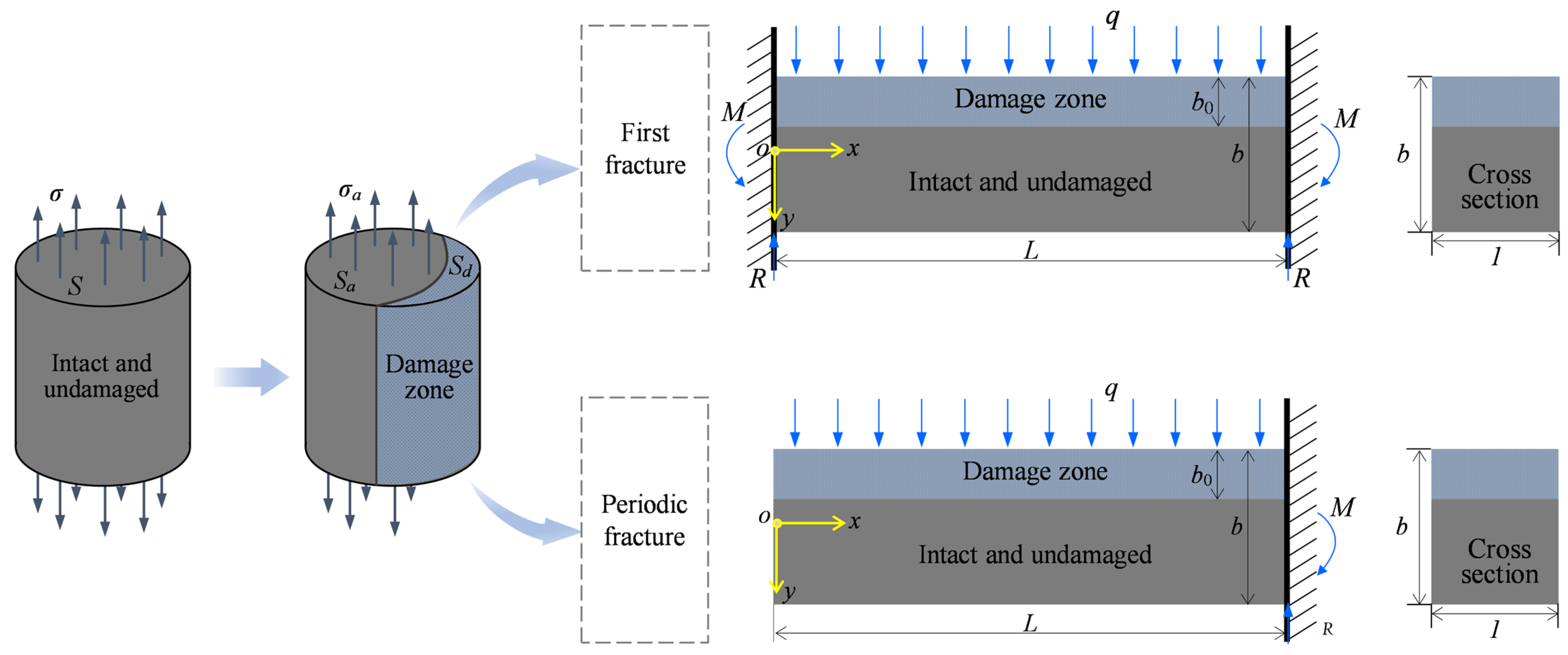
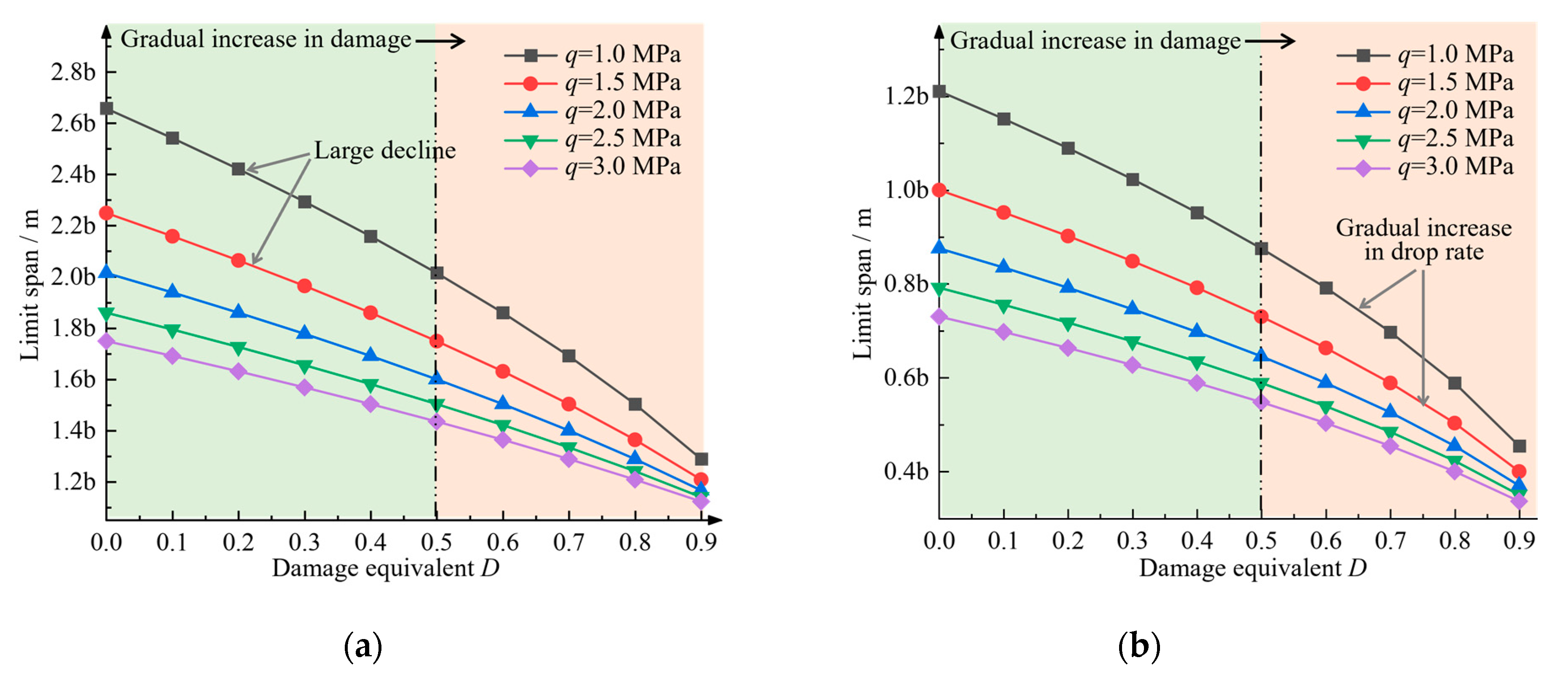
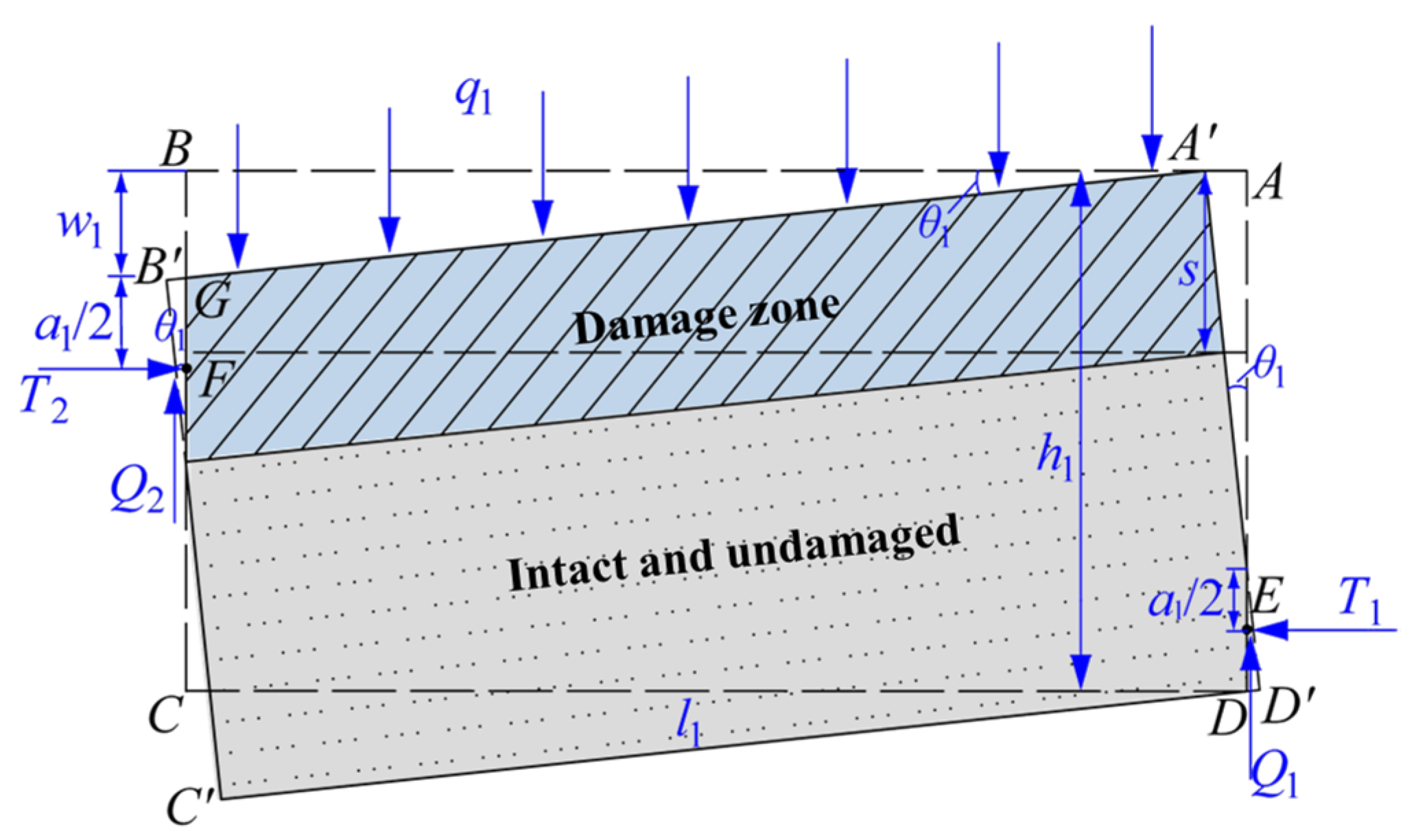



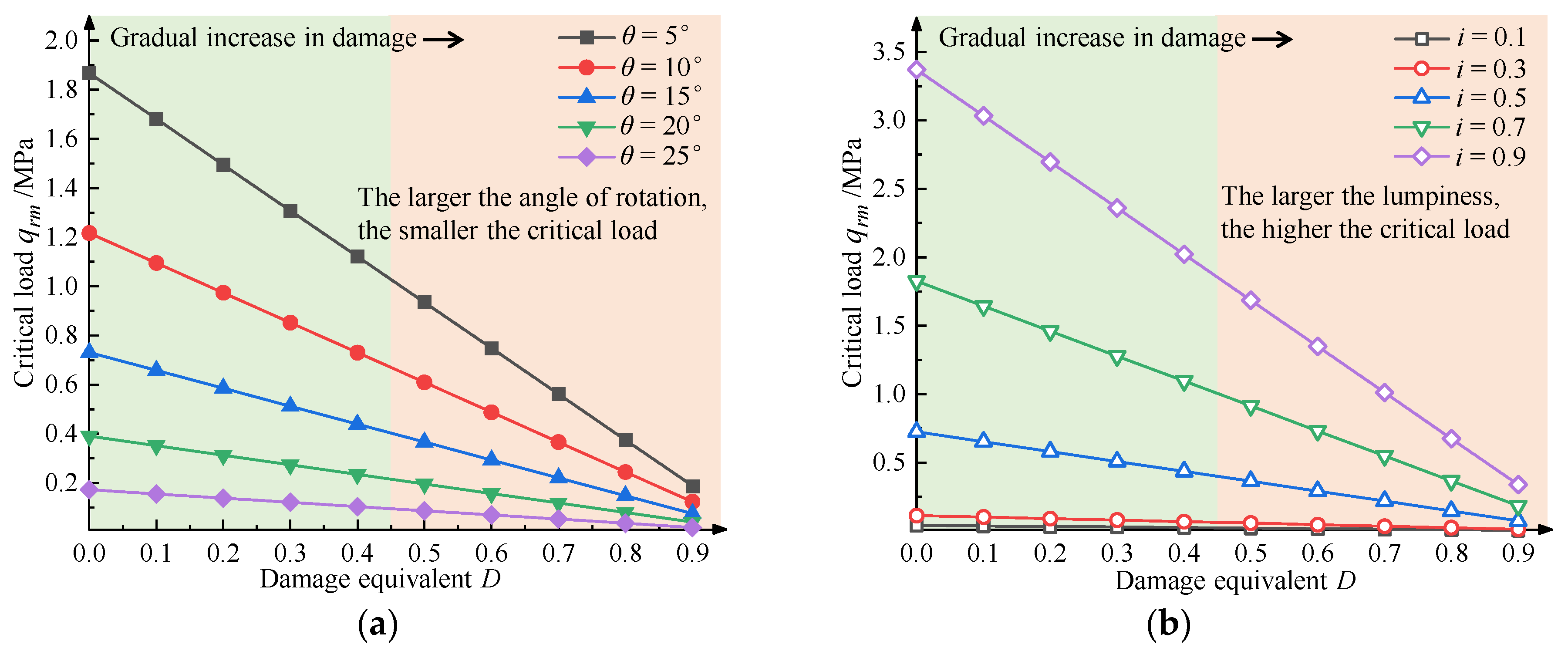


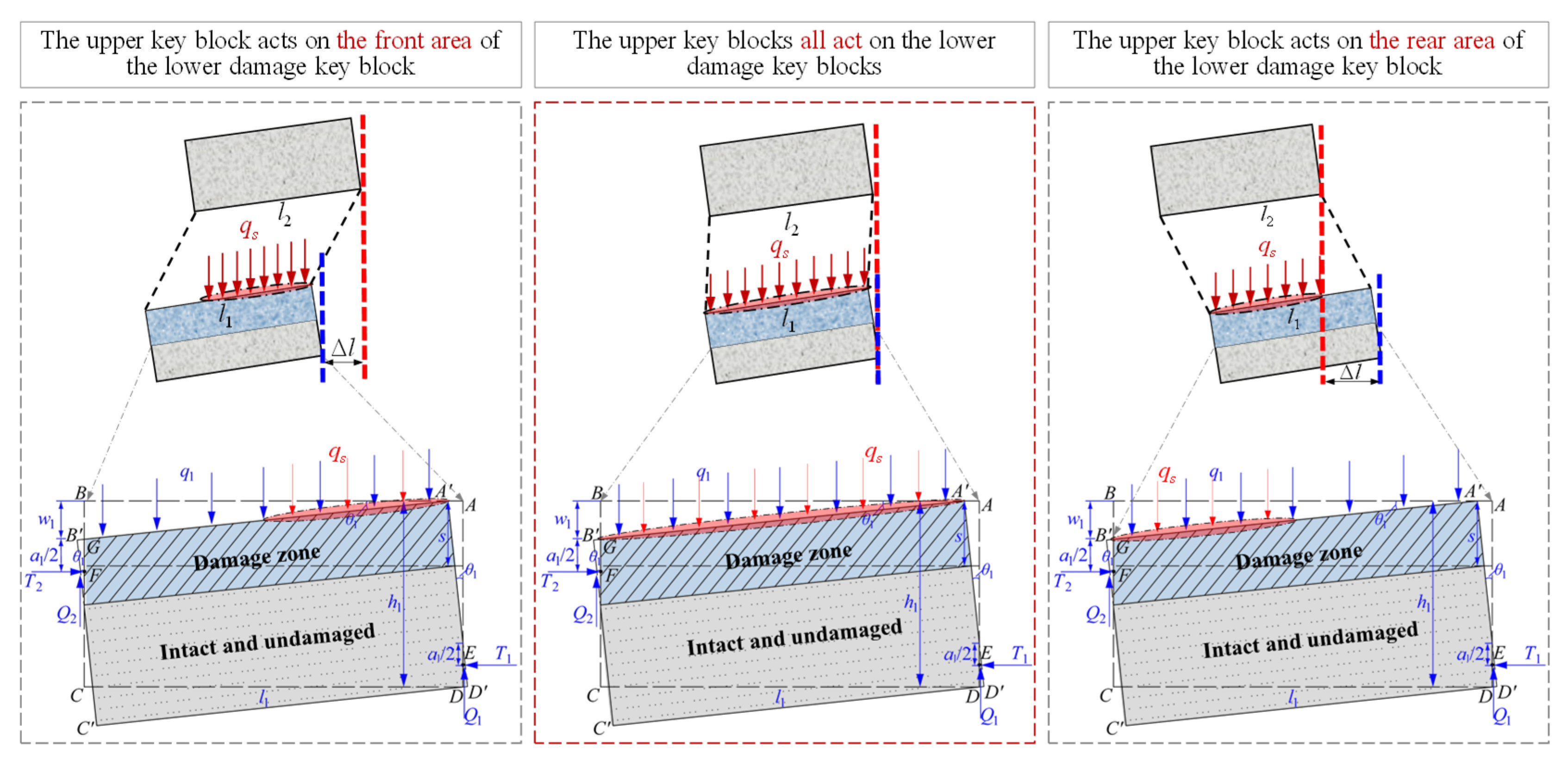
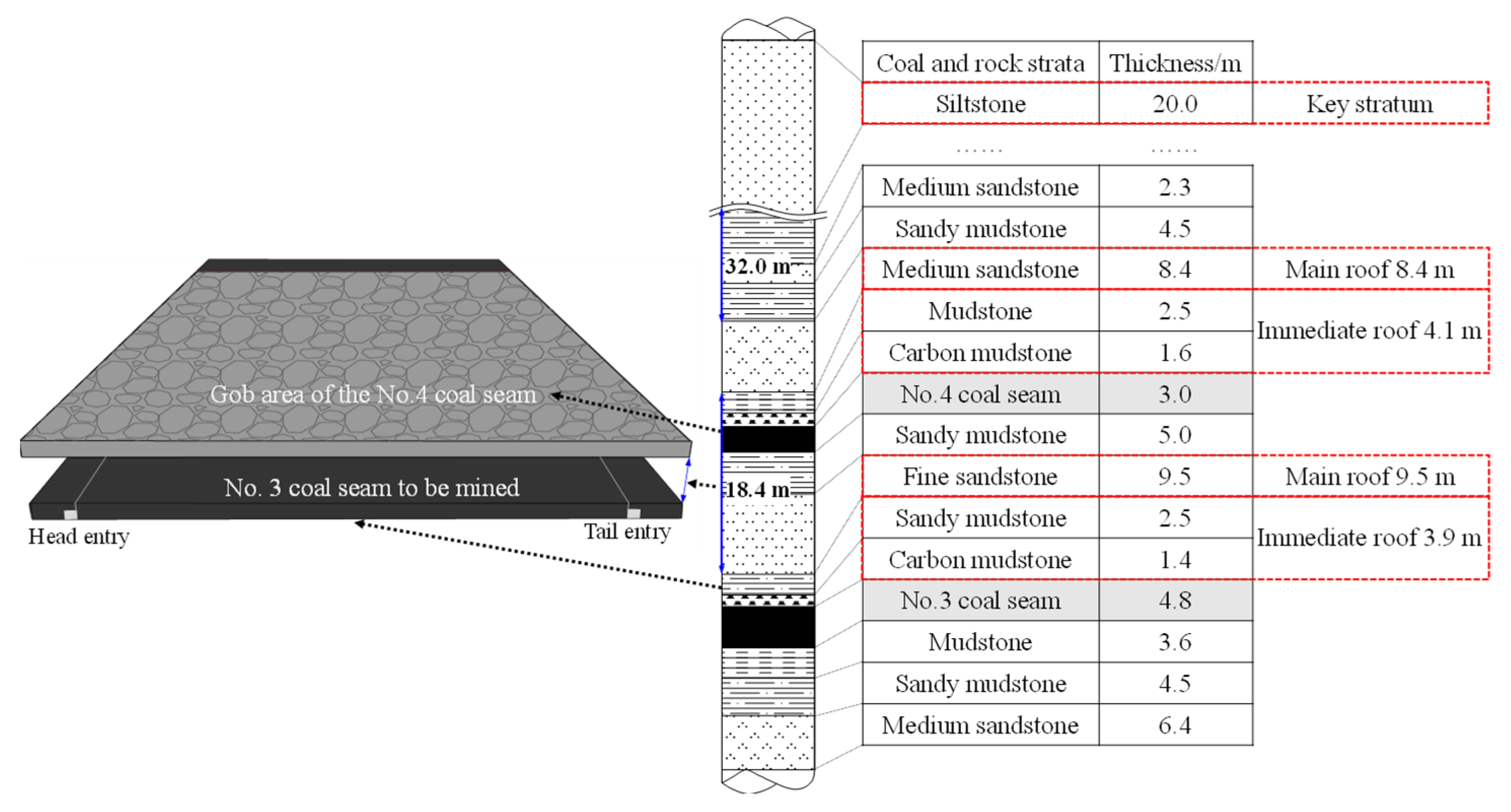

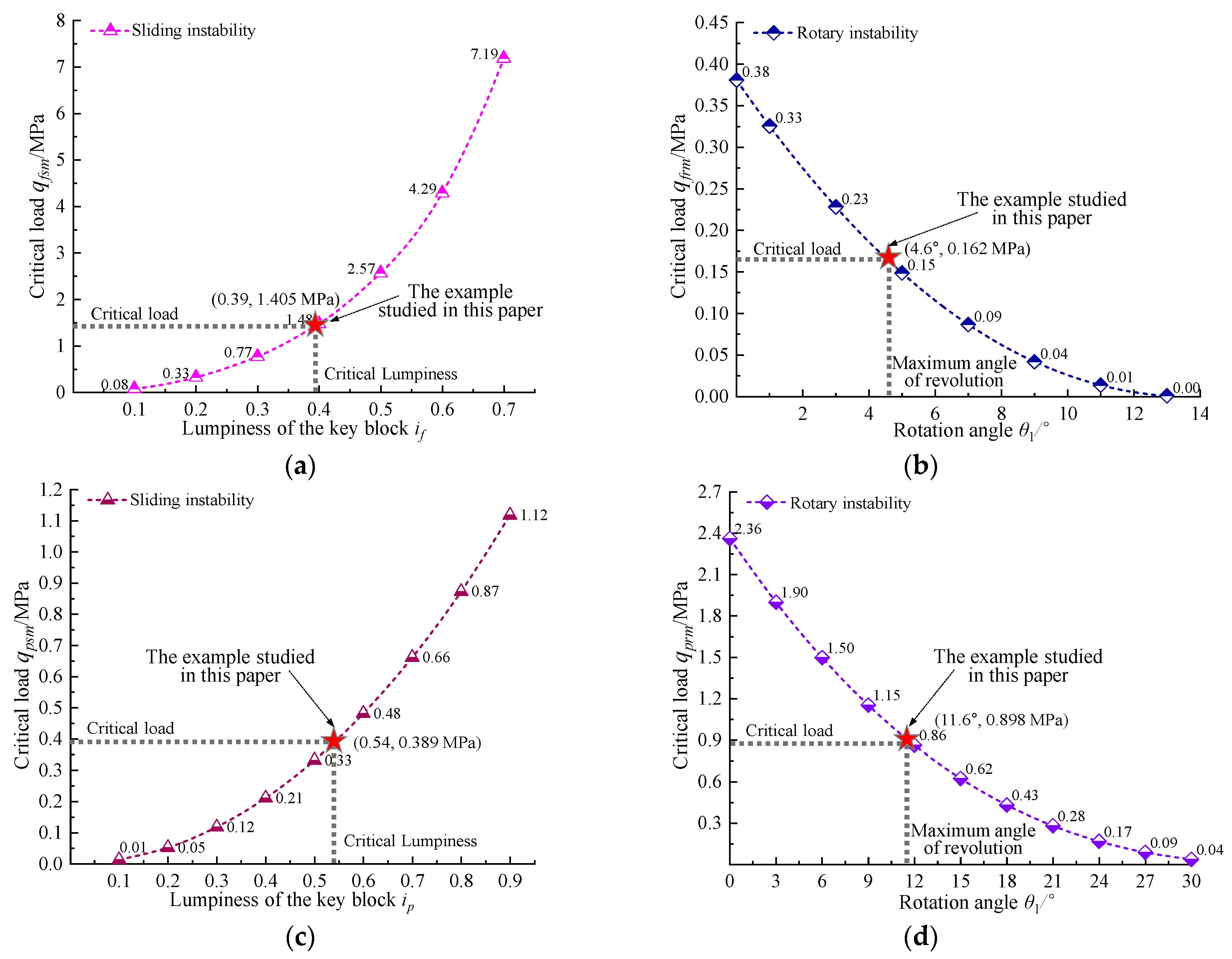
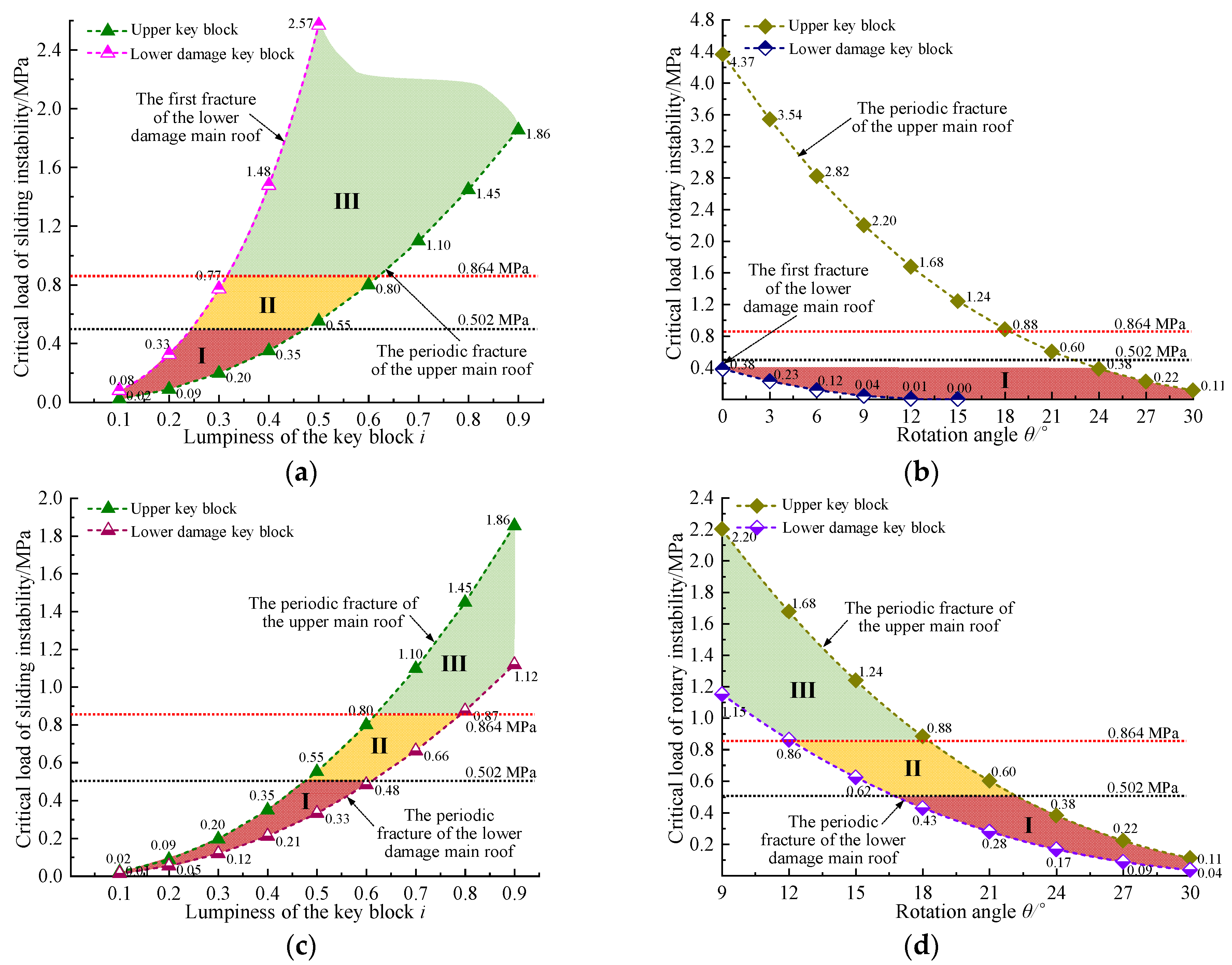

Publisher’s Note: MDPI stays neutral with regard to jurisdictional claims in published maps and institutional affiliations. |
© 2022 by the authors. Licensee MDPI, Basel, Switzerland. This article is an open access article distributed under the terms and conditions of the Creative Commons Attribution (CC BY) license (https://creativecommons.org/licenses/by/4.0/).
Share and Cite
Xie, S.; Wu, Y.; Guo, F.; Chen, D.; Wang, E.; Zhang, X.; Zou, H.; Liu, R.; Ma, X.; Li, S. Interaction Mechanism of the Upper and Lower Main Roofs with Different Properties in Close Coal Seams: A Case Study. Energies 2022, 15, 5533. https://doi.org/10.3390/en15155533
Xie S, Wu Y, Guo F, Chen D, Wang E, Zhang X, Zou H, Liu R, Ma X, Li S. Interaction Mechanism of the Upper and Lower Main Roofs with Different Properties in Close Coal Seams: A Case Study. Energies. 2022; 15(15):5533. https://doi.org/10.3390/en15155533
Chicago/Turabian StyleXie, Shengrong, Yiyi Wu, Fangfang Guo, Dongdong Chen, En Wang, Xiao Zhang, Hang Zou, Ruipeng Liu, Xiang Ma, and Shijun Li. 2022. "Interaction Mechanism of the Upper and Lower Main Roofs with Different Properties in Close Coal Seams: A Case Study" Energies 15, no. 15: 5533. https://doi.org/10.3390/en15155533





